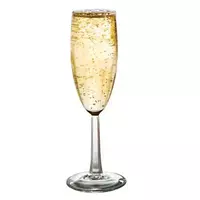Sparkling wines

Usually, when the phrase sparkling wines is mentioned, the vast majority of compatriots will have a parallel with champagne. In reality, champagne is of course a sparkling wine. However, champagne is a type of sparkling wine. Since there are currently not a dozen different types of drink. If you adhere to the definition used in the food industry, sparkling wine is nothing more than a drink made from certain grape varieties and subsequently saturated with carbon dioxide.
In turn, carbon dioxide is carbon dioxide, that is, a compound that is a colorless gas contained in the Earth's atmosphere. What is noteworthy about carbon dioxide over the past century has been actively used not only in the production of sparkling wines, but also in the production of other food products. Food additive Ye260 or carbon dioxide is used in the food industry as a preservative or baking powder. In addition, carbon dioxide is used in the production of all carbonated drinks, including sparkling wines, without exception.
It is worth noting that thanks to champagne, one of the most famous sparkling wines, a unique method of producing drinks has appeared in winemaking. According to the so-called methode champenoise or "champagne method, " a natural fermentation method is used to produce sparkling wines, as a result of which the drink is saturated with carbon dioxide and acquires its distinctive taste and consumer characteristics. Sparkling wines should not be confused with sparkling or fizzy wine.
Types of sparkling wines
For the production of sparkling wines, carbon dioxide is artificially introduced into the drink. A bottle of any kind of sparkling wine contains excess carbon dioxide, which is released at the moment when the drink is opened. For this reason, often sparkling guilt is literally "shot" with a bottle cork. Often, sparkling wine producers call the final drink champagne. However, only wine made in France in the Champagne region has the right to be called champagne.
Among the most common national types of sparkling wines are the following:
French champagne;
Sekt sparkling wine is made in Germany;
Italian famous sparkling wines Cava, Franciacorta, Bracchetto, Prosecco, as well as Lambrusco;
domestic Soviet champagne or Russian champagne;
a sparkling wine from South Africa called Cap Classique.
In addition, sparkling wines are produced in England, Australia, the USA, Portugal and Ukraine. White as well as rosé sparkling wine are demarcated. The first sparkling wines on the territory of the Russian Empire began to be made from the end of the 18th century. It is noteworthy that it was at this time that the entire Russian intelligentsia fell under the influence of French culture. Nobles studied French from childhood and spoke it freely, ladies dressed with an eye on Parisian fashion, and not a single dinner party or reception henceforth did not do without the obligatory participation of sparkling wines.
sparkling wines 66 kCal
Energy value of sparkling wines (Ratio of proteins, fats, carbohydrates - ju):
Proteins: 0 g (~ 0 kCal)
Fats: 0 g (~ 0 kCal)
Carbohydrates: 4.5 g (~ 18 kCal)
Energy ratio (bj | y): 0% | 0% | 27%
 Español
Español Français
Français Português
Português Русский
Русский 简体中文
简体中文 繁體中文
繁體中文 日本語
日本語 한국어
한국어 العربية
العربية Türkçe
Türkçe Қазақ
Қазақ Deutsch
Deutsch Italiano
Italiano Українська
Українська
